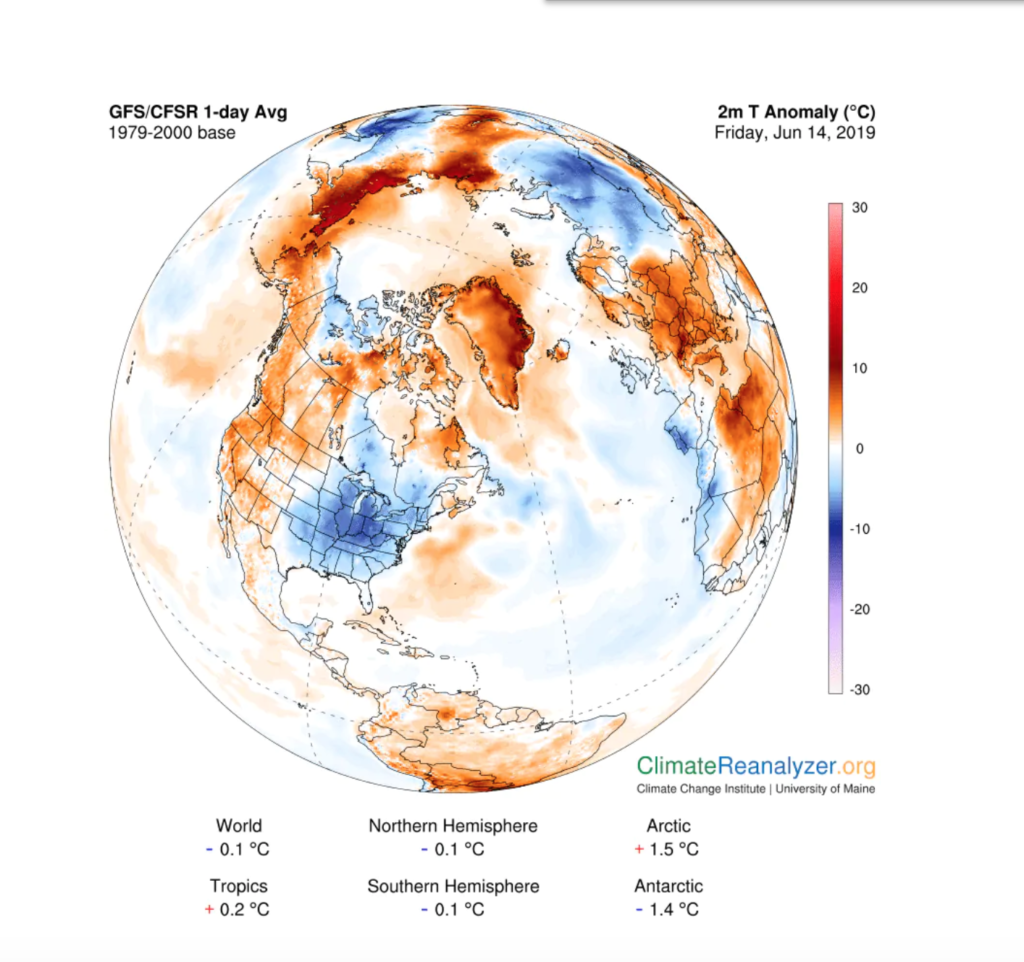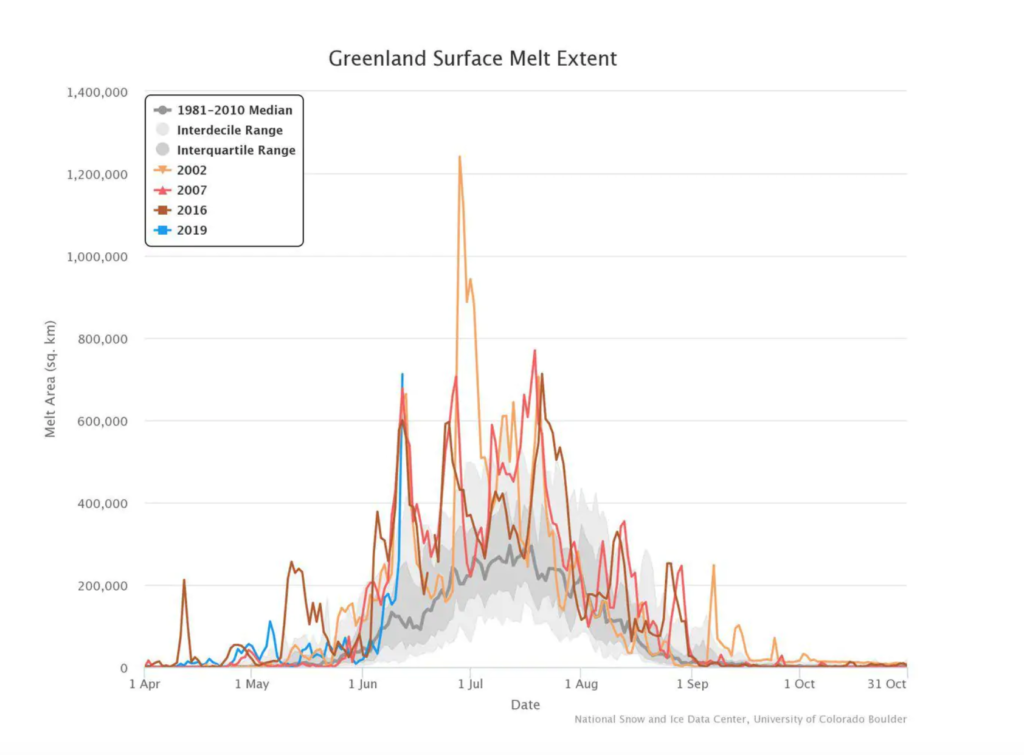A photo taken in Greenland by Steffen Olsen from the Centre for Ocean and Ice at the Danish Meteorological Institute, depicts the surreal image of sled dogs crossing a wide expanse of melt water where there should be ice. A captivating image that appears to show the dogs walking on water, quickly becoming a banner for media coverage on climate change.
@SteffenMalskaer got the difficult task of retrieving our oceanographic moorings and weather station on sea ice in North West Greenland this year. Rapid melt and sea ice with low permeability and few cracks leaves the melt water on top. pic.twitter.com/ytlBDTrVeD
— Rasmus Tonboe (@RasmusTonboe) June 14, 2019
The photo was taken as researchers worked to recover their monitoring instruments and weather stations in North West Greenland. In the process they ran into a concentration of melt water that had accumulated because the ice, which in this area forms thickly each winter, has few cracks and therefore cannot drain through.
By now we have all already read about this story, as the viral image reached social media feeds and the front pages of major newspapers around the globe. Many have taken this as proof of climate change and an indication that global warming is a shocking and irrefutable reality. However, the reality is not that simple and there are two important considerations to be made.
Firstly, it is important to state that this is not an unprecedented event. Although unusual for this time of year, as a particularly strong heatwave hit Greenland last week, the formation of melt water above sea ice with low permeability is a regular occurrence, usually in late June or July.
In fact, Ruth Mottram, climate scientist at the Danish Meteorological Institute, claims that the role of global warming in this phenomenon is not a given as it can “still [be considered] a weather-driven extreme event, so it’s hard to pin it down to climate change alone”.
Equating the picture of melt water to proof of climate change is a simplification that can become problematic and opens climate change debate to easy critiques. For example, a side effect of the heatwave in Greenland has been lower than average temperatures in North America, whereby the cold air normally contained in that region is rushing into the mid-latitudes — like a fridge door left ajar.
This highlights the need to explain the relationship between weather driven events and climate change. Enrico Scoccimarro, Senior Scientist at CMCC, whose main research activity is to investigate the relationship between tropical cyclones and the climate, when interviewed explained that: “the association of climate change to single events is tricky”. As an expert in extreme weather events, Scoccimarro highlights the importance of arriving at conclusions by looking at general trends over long periods of time, rather than pointing at single weather events as proof of a broader truth, as this can often be misleading. An excellent example can be found in his research on tropical storms whereby: “In general we know that […] there will be less tropical cyclones because of climate change […] this said when they do form, the availability of energy for the intensification of the process is greater […] therefore less cyclones but more intense ones.” Another clear example of how we must analyse the effects of climate change by looking at the bigger picture rather than focusing on single events.

When reporting on climate change, it is important to distinguish between weather and climate, indicators and proof, short term and long term; thus maintaining scientific rigour whilst at the same time making information accessible to the broader public. After all climate describes what the weather is like over a long period of time in a specific area.
That said, there is another important message contained in Steffen’s viral photograph: if we want to raise public awareness and therefore propel change at the grassroots level, then we need images and words that are able to move people, grab their attention and pull at their heartstrings. Although his photograph is not proof of climate change, it is an image that speaks a thousand words on the research being done in the area: weather satellites monitoring sea ice in the Arctic since 1979 indicate that current ice coverage is the lowest on record for mid-June. Furthermore, sea ice loss over the northern coast of Alaska has been “unprecedented” according to Rick Thoman, a climatologist based in Fairbanks. These are phenomenon that can be ascribed to climate change as they analyze the long term patterns of weather in the region. The simple image of dogs walking on water where there should be ice can help stimulate the viewers imagination on what would otherwise be, excuse the pun, “dry facts”.
If images can raise awareness in public opinion about the dire and undeniable situation that our environment faces due to anthropogenic climate change, then it is important that they be shared. At the same time it is also essential to put them in context and explain the true complexity of the climate crisis.







